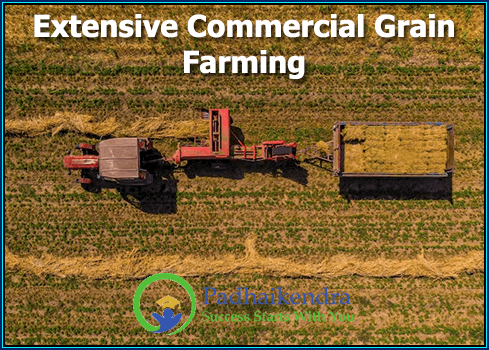Extensive commercial grain farming is a type of agriculture that involves the large-scale cultivation of grain crops on vast areas of land for commercial purposes. This type of farming is typically practiced in regions with flat terrain and fertile soil, such as the Great Plains in the United States, the Pampas in Argentina, and the Prairies in Canada. It relies on modern technology and machinery to manage large areas of land and maximize yields. Crops such as wheat, corn, soybeans, and rice are commonly grown using monoculture practices, in which a single crop is grown repeatedly in the same area, often with the use of chemical fertilizers and pesticides.
The use of large-scale irrigation systems, mechanized harvesting equipment, and advanced storage and transportation systems are also common in extensive commercial grain farming. This allows for efficient production, processing, and distribution of grain crops on a global scale.
While extensive commercial grain farming can provide significant economic benefits, including increased food production and export opportunities, it can also have negative impacts on the environment, such as soil erosion, water depletion, and loss of biodiversity.
To mitigate these negative impacts, sustainable farming practices are being developed, such as conservation tillage, which involves reducing soil disturbance during planting, and crop rotation, which involves alternating crops to improve soil health and reduce the need for fertilizers and pesticides.
Overall, extensive commercial grain farming can be an important source of food and income, but it is important to balance the benefits with the potential environmental impacts and work towards sustainable practices.





